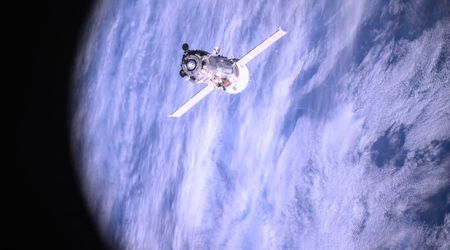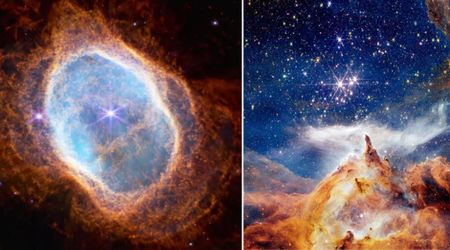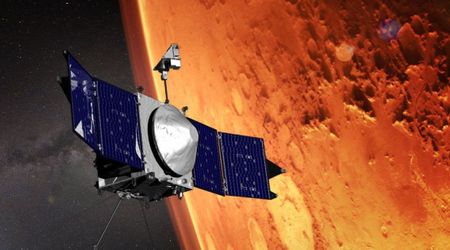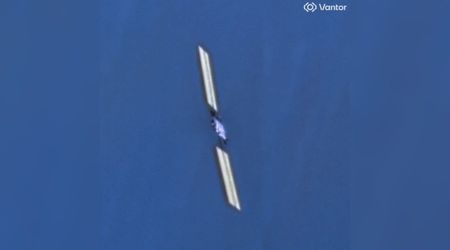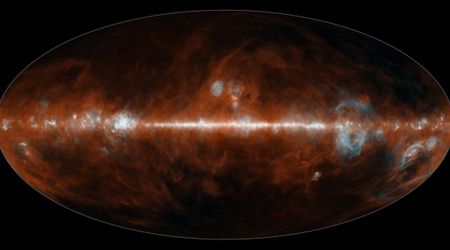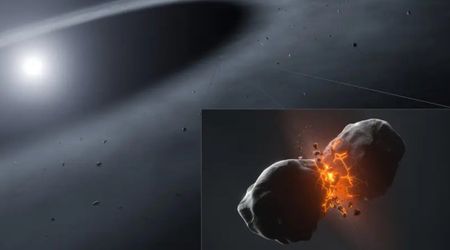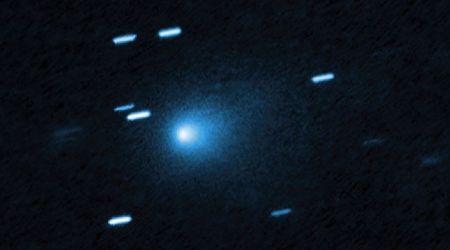NASA’s Psyche captures stunning images of Earth and Moon from 180 million miles away

NASA’s Psyche spacecraft, currently on a voyage to a metal-rich asteroid, has successfully tested its onboard cameras, capturing stunning images of Earth and the Moon from a distance of approximately 180 million miles (290 million kilometers). The pictures, taken between July 20 and July 23, show our celestial neighbors as bright, sparkling points of light within the constellation Aries, as per NASA.
Couple goals: Even from 180 million miles away, Earth and the Moon look great together. Don't you think, @NASAArtemis?
— NASA Solar System (@NASASolarSystem) August 19, 2025
During a recent camera calibration on its journey to an asteroid, our #MissionToPsyche spacecraft glimpsed our home world from afar. https://t.co/tzk7A6XwXc pic.twitter.com/SteHiTGDkX
The spacecraft’s multispectral imager, a pair of identical cameras with filters and telescopic lenses, is designed to photograph the asteroid’s surface in different wavelengths of light. By analyzing the spectrum of light, scientists can determine the composition of a planetary body. The calibration process involves photographing objects with known spectra, such as Jupiter and Mars, to ensure the instruments are working correctly. The team plans to continue these tests on other bodies like Saturn or the asteroid Vesta.

The successful calibration is a key step for the mission, which aims to help scientists better understand the formation of rocky planets with metallic cores, including our own. “We’re sort of collecting solar system ‘trading cards’ from these different bodies," said Jim Bell, the imager instrument lead, "and running them through our calibration pipeline to make sure we’re getting the right answers."
The camera test was part of a broader instrument checkout in late July, which also included the spacecraft’s magnetometer and the gamma-ray and neutron spectrometer. All systems are reported to be functioning as expected. The next major milestone for the mission is a flyby of Mars in May 2026, where the spacecraft will use the planet's gravity to propel it toward the asteroid. Launched in October 2023 from NASA's Kennedy Space Center, the Psyche spacecraft has already traveled a billion miles since leaving Earth.
The Psyche mission, while progressing smoothly, recently encountered and resolved a minor issue with its propulsion system. In early April, the spacecraft's electric thrusters unexpectedly shut down after a pressure drop was detected in the primary line supplying xenon propellant. After a detailed investigation, NASA engineers identified the cause: a component within a valve in the original propellant line had failed, obstructing the flow of xenon. To bypass the blockage and restore propulsion, the team switched to a backup propellant line. This alternative line is now fully operational, and NASA plans to keep a similar valve in this backup line permanently open to prevent a similar failure.

With this solution in place, the team successfully reactivated the spacecraft's thrusters. The issue was resolved by the mid-June target date, allowing the spacecraft to resume its planned trajectory toward the asteroid. The swift response demonstrates the mission team's ability to navigate unexpected challenges, ensuring Psyche remains on course for its 2029 rendezvous.

The Psyche mission is a testament to the collaborative efforts of several institutions. Arizona State University (ASU) leads the mission, with Lindy Elkins-Tanton of the University of California, Berkeley serving as the principal investigator, as mentioned on NASA. NASA’s Jet Propulsion Laboratory (JPL), a division of Caltech in Pasadena, oversees the mission's overall management, including system engineering, integration, and operations. Maxar Technologies in Palo Alto, California, constructed the high-power solar electric propulsion spacecraft chassis. ASU also leads the operations of the imager instrument, working alongside Malin Space Science Systems in San Diego, to cement the cameras' design and fabrication.

